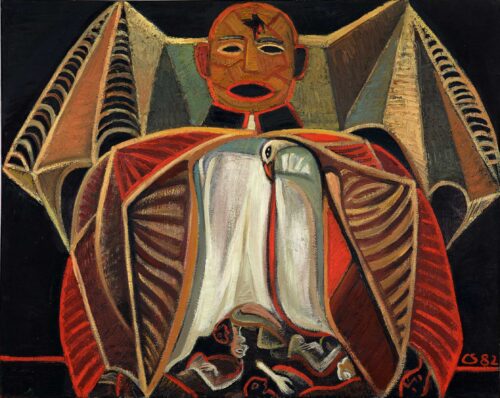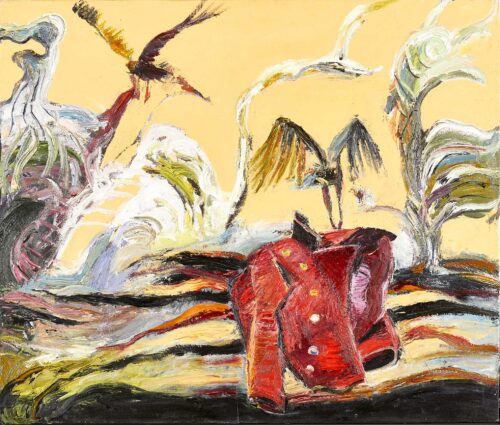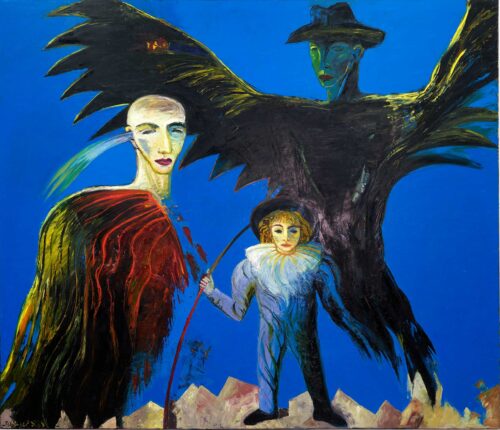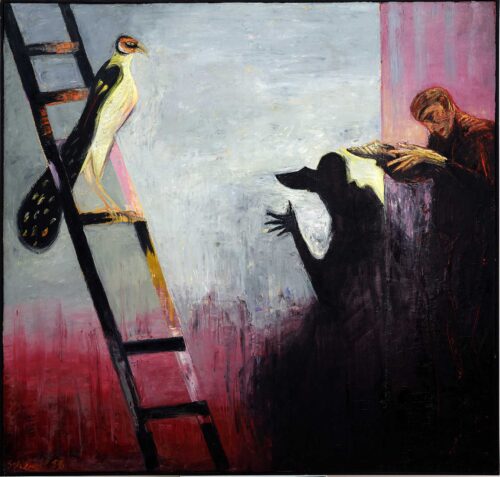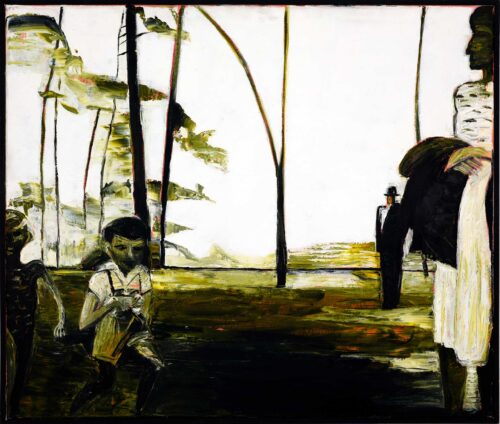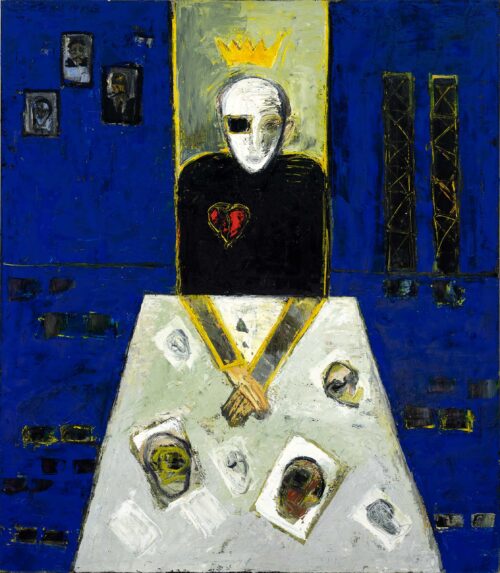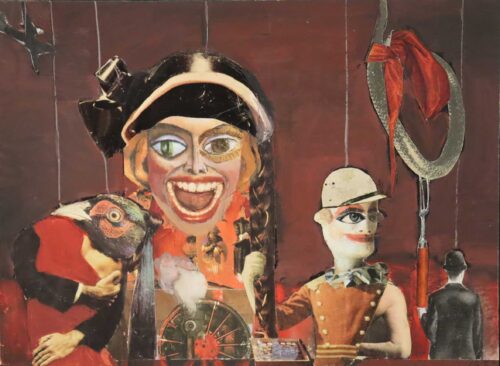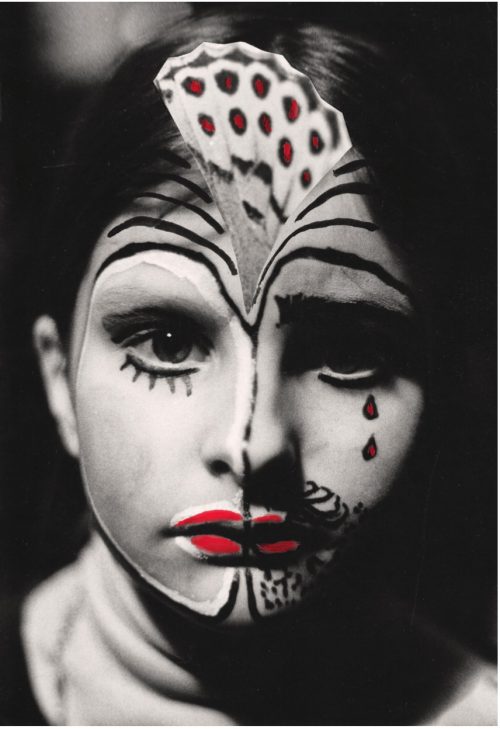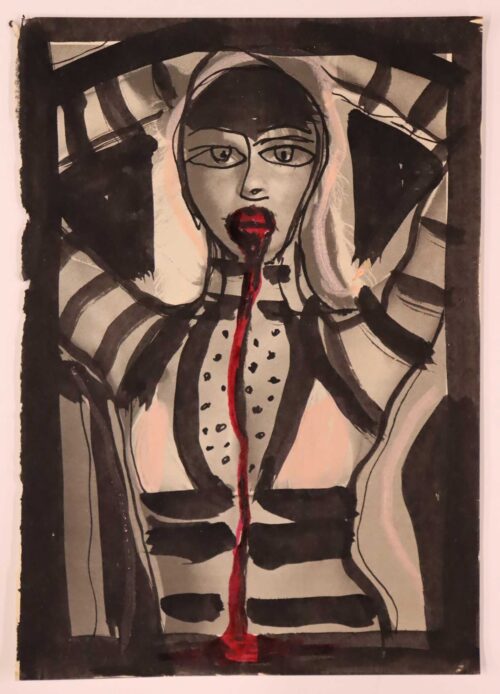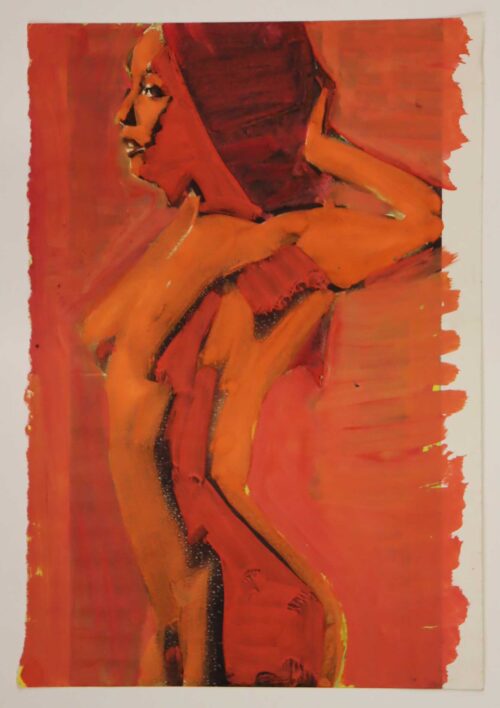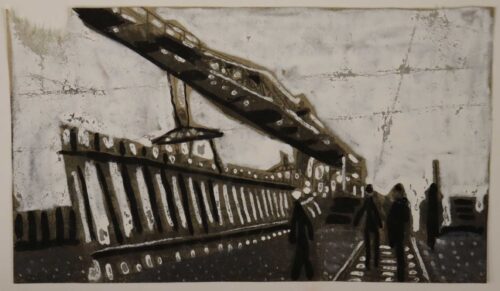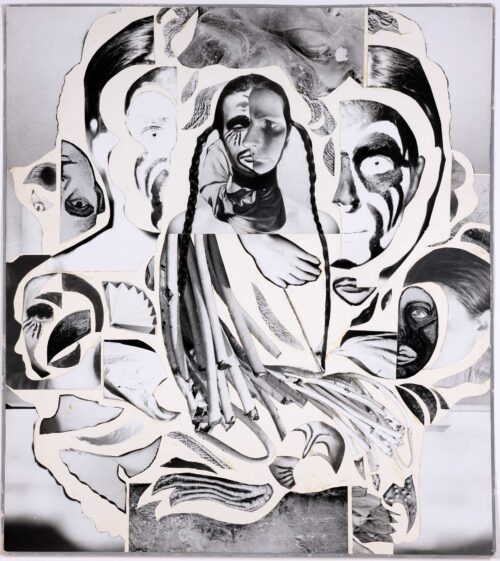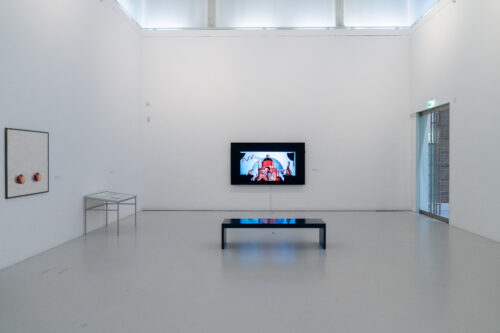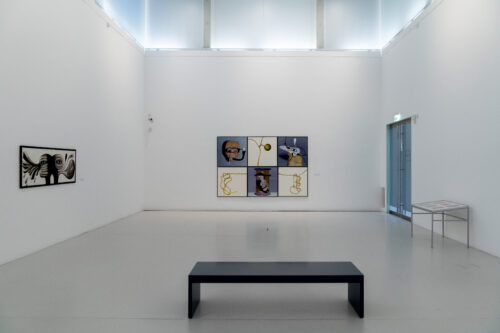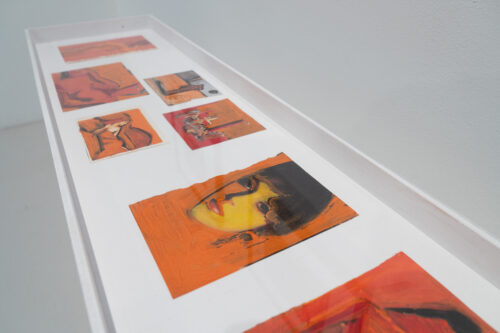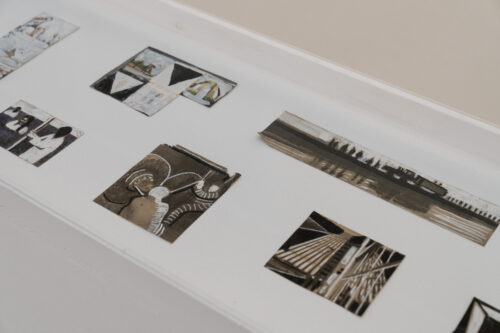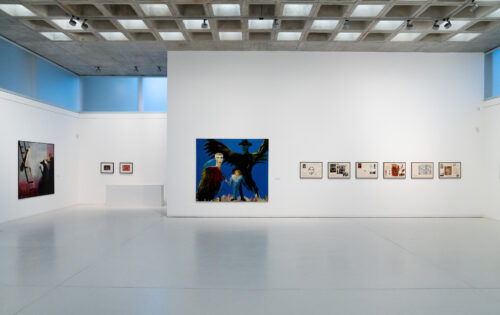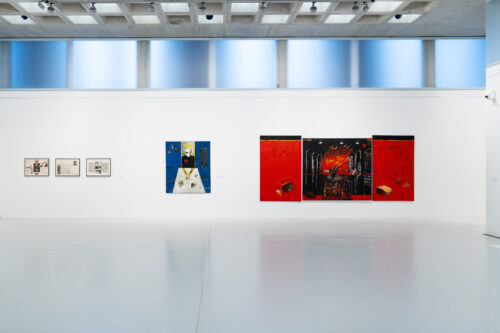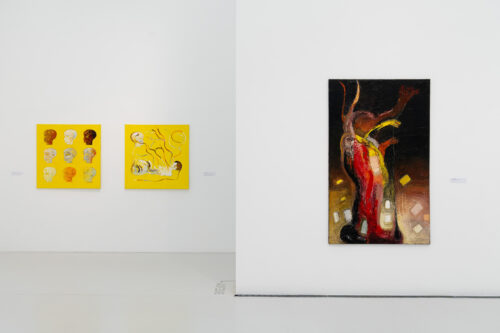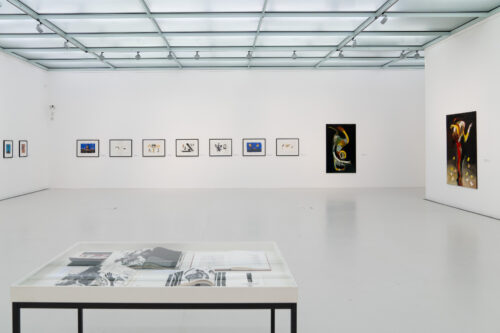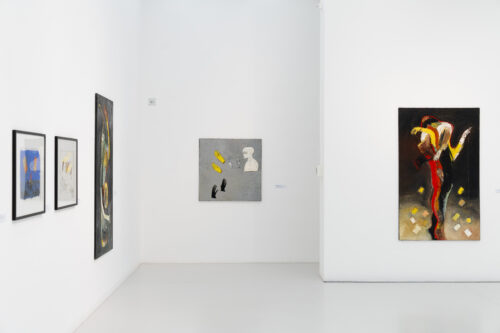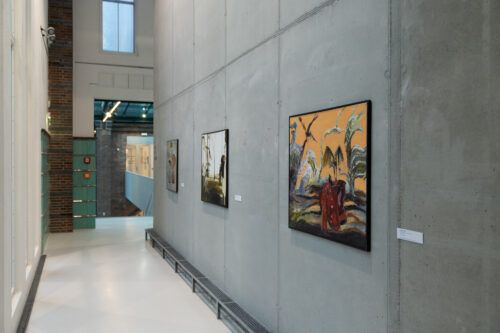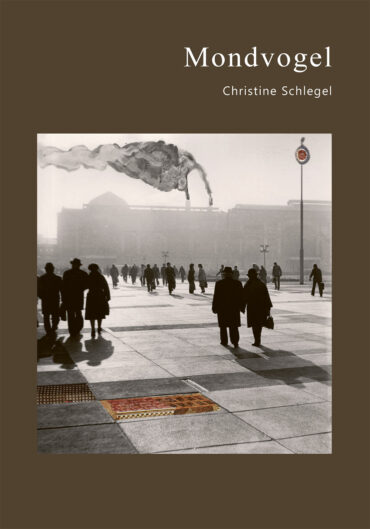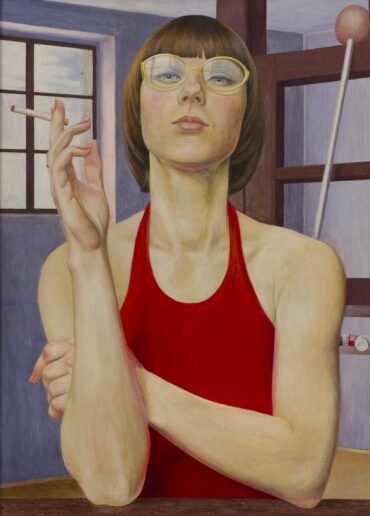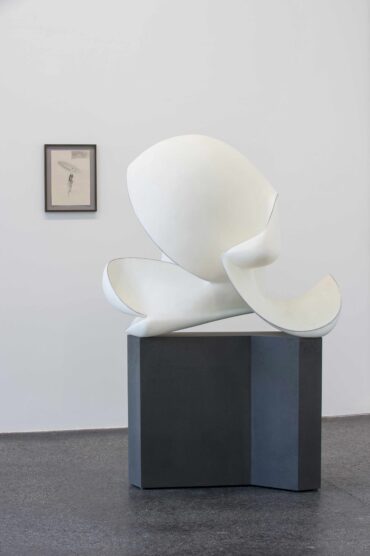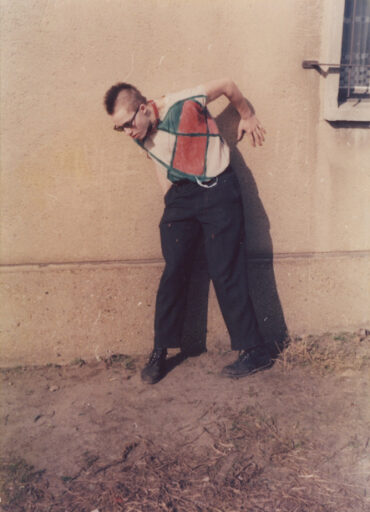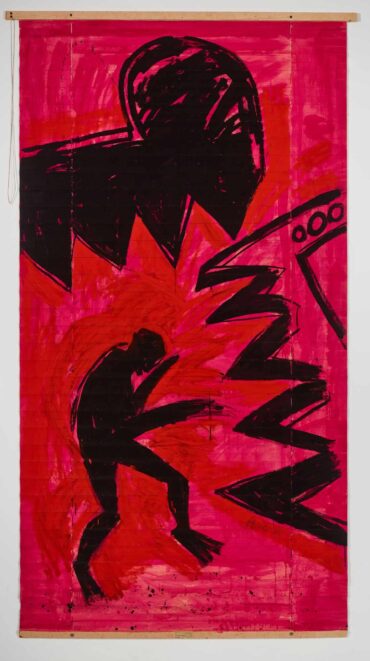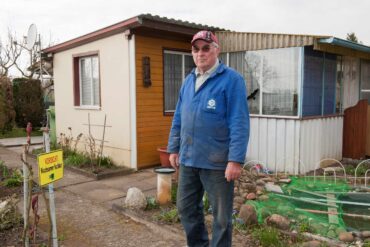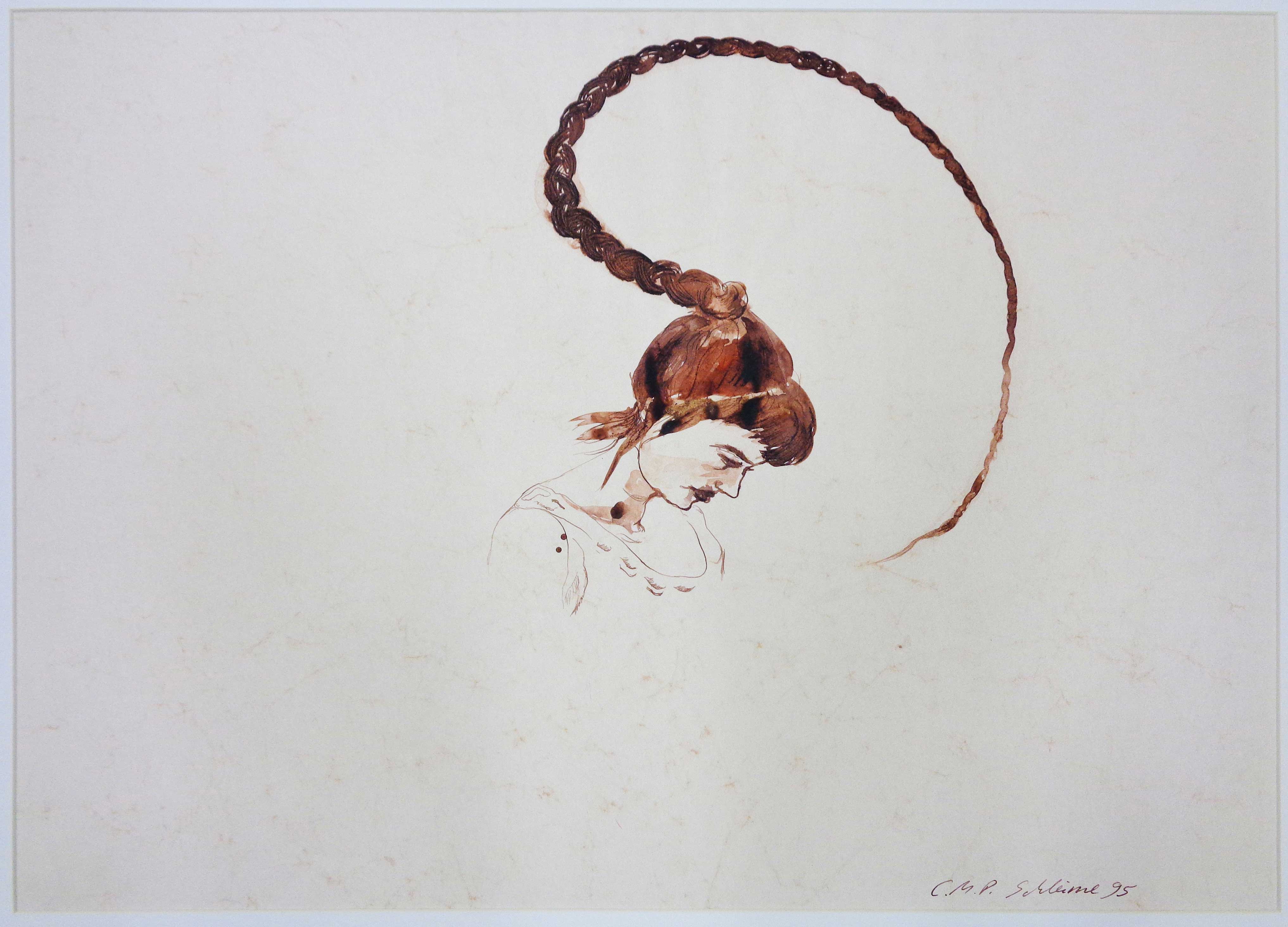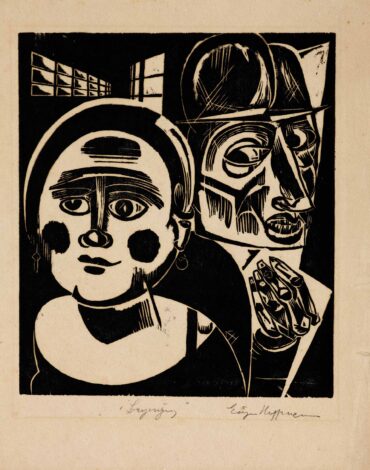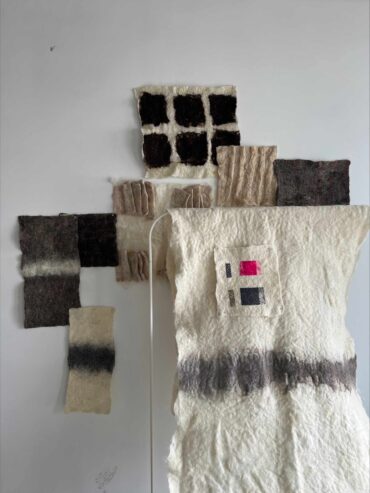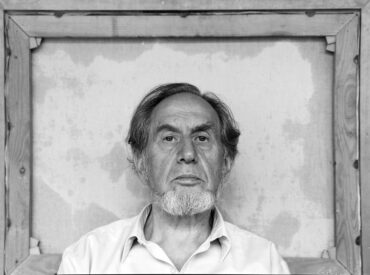
Christine Schlegel Lärmende Stille
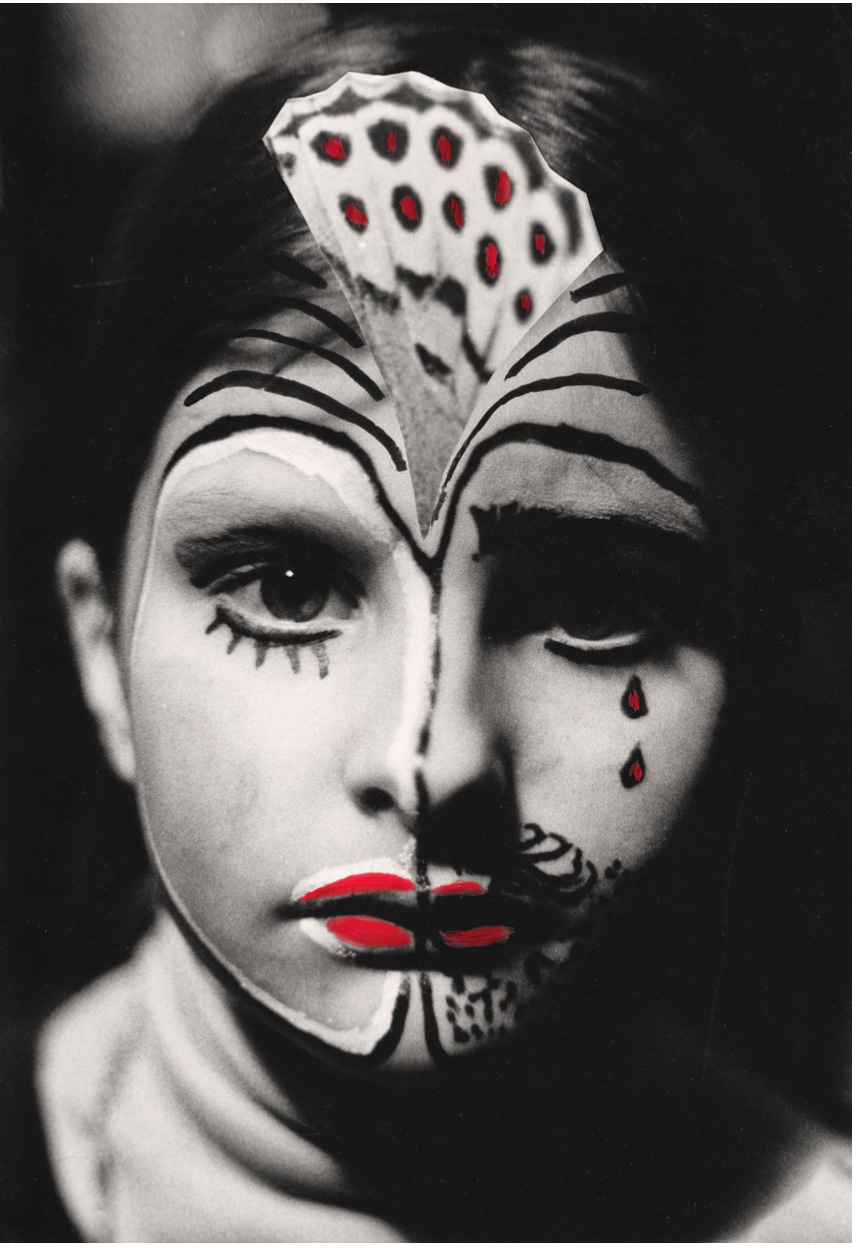
Christine Schlegel, Antonia, meine Tochter 7 Jahre © Künstlerin
Im Zentrum der Ausstellung stehen großformatige Gemälde der in Dresden lebenden Künstlerin Christine Schlegel (geb. 1950 in Crossen an der Mulde) aus der Sammlung des BLMK. Ergänzt werden jene Malereien, die meist im letzten Jahrzehnt der DDR sowie dem ersten Jahrzehnt des geeinten Deutschlands entstanden sind, durch Collagen und Filme aus den frühen 1980er Jahren einerseits, aber auch durch aktuelle Werke andererseits.
Spätestens während ihres Studiums der Malerei an der Hochschule für Bildende Künste (HfBK) Dresden zeichnete sich ab, dass Christine Schlegels Vorstellung von Kunst (und Leben) nicht mit strengen Reglementierungen jeglicher Art in Einklang zu bringen wäre. Während sich ihr Unbehagen zunächst am normativen System der DDR entzündete, blieb sie auch nach ihrer Ausreise in die BRD bzw. die Niederlande im Jahr 1986 ein kritischer Freigeist, dessen Streben nach unbedingter Autonomie das gesamte Œuvre kennzeichnet.
Von Beginn an entwickelte Christine Schlegel ihre Bild-/Weltentwürfe, die auf profunden Auseinandersetzungen mit kunstgeschichtlichen Bildern von mythologischen Erzählungen und Wirklichkeiten aufsetzen. In ihren Arbeiten verschwistern sich jene Reflexionen mit oft kritischem, jedoch auch oft humorvollem Blick auf gesellschaftspolitische Realitäten und alltägliche Lebensbedingungen. In geradezu cinematographischer Weise lässt die Künstlerin in allen Ausdruckformen ihrer Bildwerke verschiedene Erzählungen und Verweissysteme zusammenfließen und schafft poetisch-phantastische Bildkosmen.
…
The solo exhibition of the Dresden-born artist, who left the GDR in the 1980s and returned to her hometown in the 1990s, spans the period from the 1970s to the early 2000s.
The exhibition focuses on large-format paintings by the Dresden-based artist Christine Schlegel (born 1950 in Crossen an der Mulde) from the BLMK collection. These paintings, which were mostly created in the last decade of the GDR and the first decade of unified Germany, are complemented by collages and films from the early 1980s and by current works.
At the latest during her painting studies at the Dresden Academy of Fine Arts (HfBK), it became apparent that Christine Schlegel’s idea of art (and life) could not be reconciled with strict regulations of any kind. While her discomfort was initially sparked by the normative system of the GDR, even after she left for the Federal Republic of Germany and the Netherlands in 1986, she remained a critical free spirit whose striving for unconditional autonomy characterizes her entire oeuvre.
From the very beginning, Christine Schlegel developed her image/world designs based on profound discussions of art-historical images of mythological stories and realities. In her works, these reflections are intertwined with an often critical, but also often humorous view of sociopolitical realities and everyday living conditions. In an almost cinematographic manner, the artist allows various narratives and reference systems to flow together in all forms of expression in her works and creates poetic-fantastic image cosmoses.
